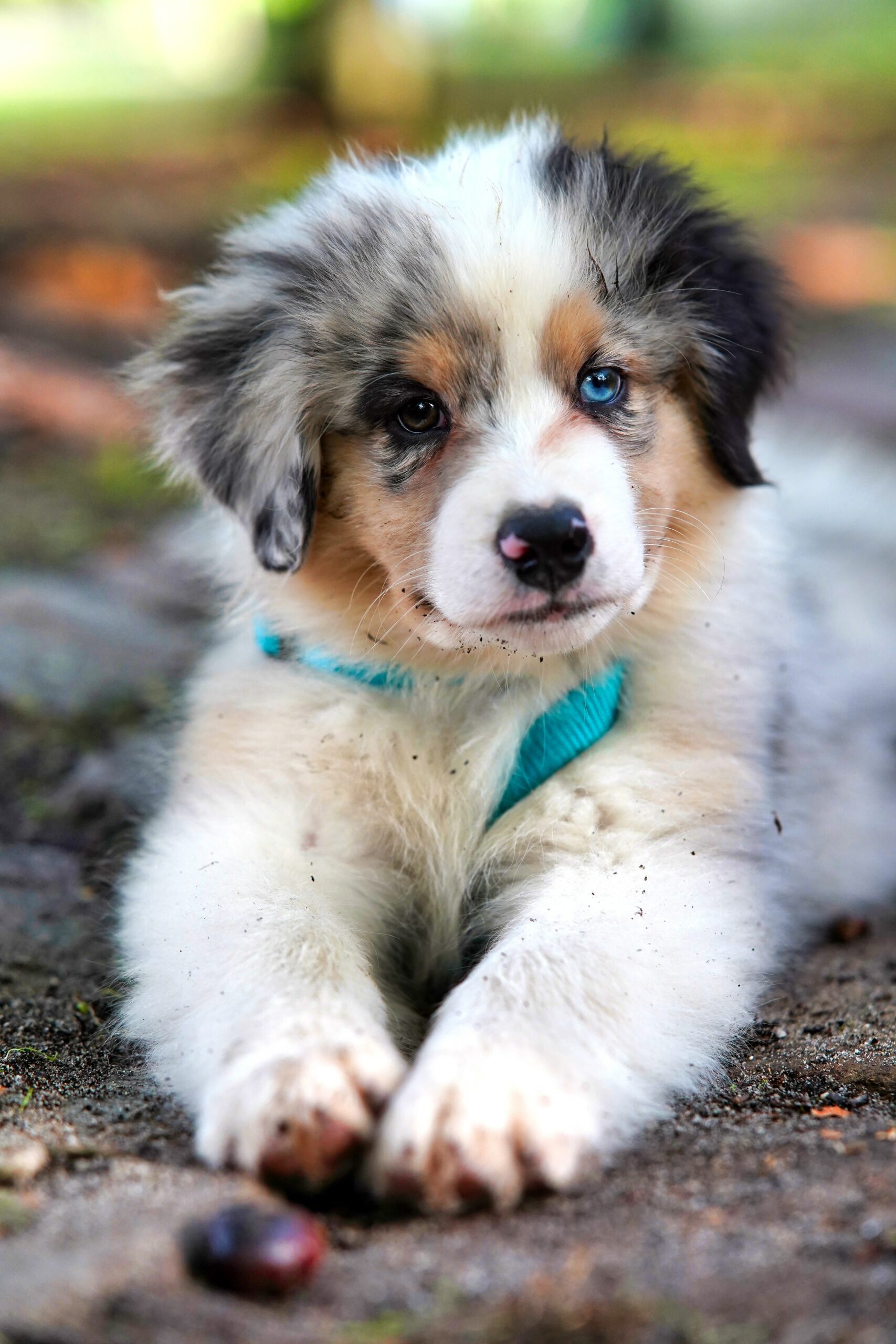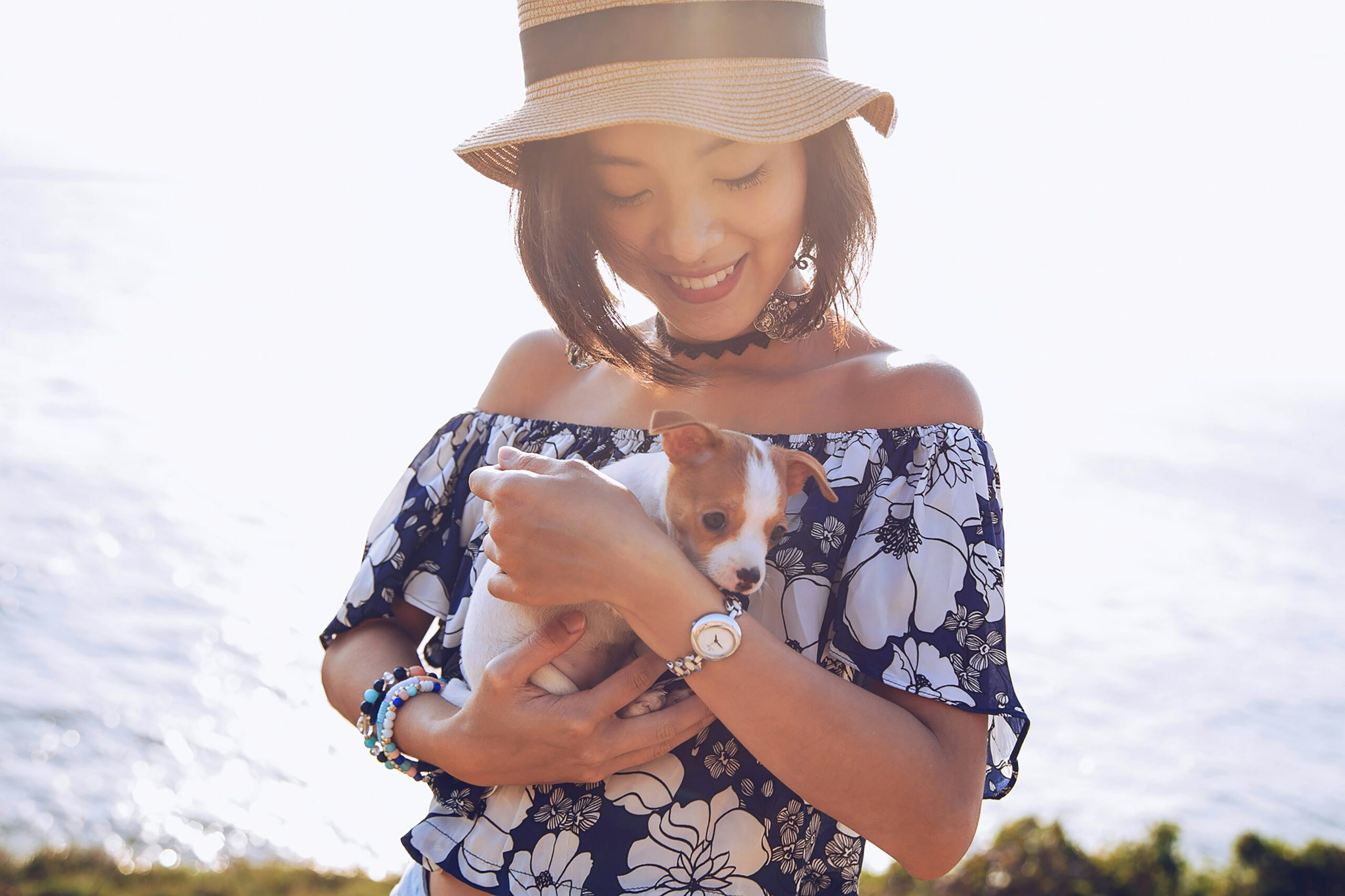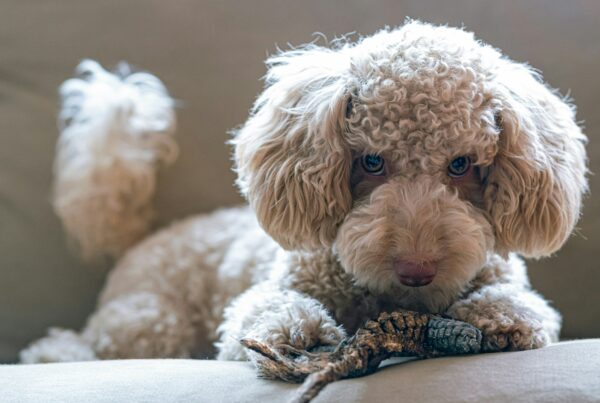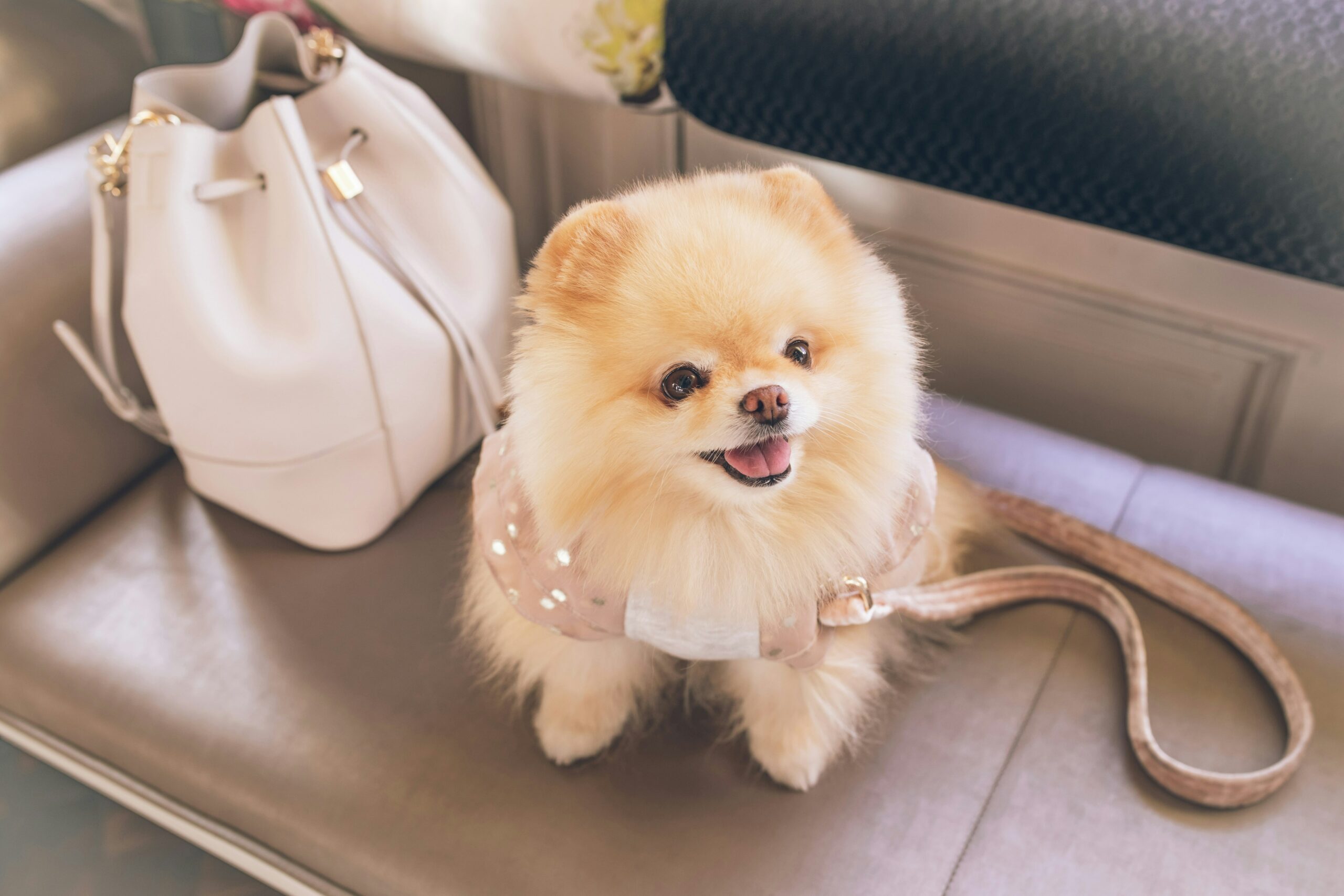The first days of a puppy at home.
The arrival of a puppy in the house is a significant event, but it’s important to consider that the pet has just been separated from its mother, and a change of environment is stressful for it. How can you help the puppy adapt and become accustomed to the new home more quickly? Plan all the stages of the move in advance to ensure that the first impression of meeting the new owners is not spoiled.
When is the best time to get a puppy.
It is not recommended to take a puppy before 45 days from birth. Up until a month and a half, it is nourished by its mother’s milk, which cannot be replaced by any other feed. The optimal age for the move is 3-4 months, when the pet has already received its first vaccination and has gone through quarantine. By this time, it is eating on its own and even knows a few basic commands. If you are looking to acquire a working dog, it’s better to wait another 2-3 months, during which you can evaluate not only the physical and external characteristics of the puppy but also its temperament.
When it comes to choosing a pet puppy, which falls into the pet class, the breeder is unlikely to agree to care for it until 4 months. As a rule, they are sold at the age of 1.5-3 months. It’s advisable not to buy the first one you come across, but to look at its siblings from the litter. This will help objectively assess the quality of the dog. Show and breed class puppies are usually taken no earlier than 10-11 months from birth. By this time, disqualifying breed traits become evident, which cannot be determined in the first months of life.
How to prepare for the arrival of a puppy at home.
- It’s best to bring the puppy home on weekends or during a vacation. This will give you time to spend with the puppy and help it cope with fear. To minimize stress, take a toy or bedding from the breeder, something that carries the scent of the puppy’s mother. This item will serve as a comforter, a kind of transitional object that holds the mother’s scent.
- Plan ahead for the puppy’s designated spot. Ideally, it should be in a living room, not in a pantry or hallway. Place a soft bedding or a small mattress in that spot, along with something from your personal belongings. This will help the puppy get used to the new scent and environment.
- Ensure that you have puppy food in the house. Before the sale, the breeder will tell you whether the puppy was fed a natural diet or commercial food. If you wish to change the food, do so gradually to avoid digestive issues. Let your household members know that feeding the puppy from the table is not allowed. If the puppy has been raised on commercial food, it’s best not to switch to a natural diet. Avoid making drastic changes to the puppy’s diet in the first few weeks after the move to avoid increasing stress levels.
- From the first day, the puppy should have its own dishes for water and food. It’s a good idea to get an adjustable stand that can be raised as the puppy grows. Choose a designated spot for the dishes and try to keep it consistent, so the puppy gets used to the routine.
- Take care of your puppy’s safety. Remove small items from the floor that it might accidentally swallow, secure electrical and phone cords, purchase special toys, and instruct children to handle the puppy gently. In the first few days, try not to lose sight of the puppy.
- Order a personalized tag for your pet with its name and contact information. Attach it to the collar when you go on the first walk. If the pet gets lost, it will be easier for people who find it to contact you.
- From the moment the puppy arrives home, start establishing order. Show it right away what is allowed and what is not, and stick to these rules consistently. Dogs often enjoy tearing books, newspapers, photo albums, and chewing on slippers. Ensure that these items are not left on the floor when the puppy is around.
- Adapting to new conditions may not always go smoothly, so make thorough preparations for the puppy’s arrival. Stock up on more pee pads, assemble a first aid kit, choose an appropriate leash and collar. It’s important to buy all of these items from a specialized pet store rather than repurposing unnecessary items from home. This applies especially to toys. Regular children’s toys are not suitable and can even be harmful for a dog, as they often contain small parts, various mechanisms, and synthetic materials that the dog could swallow.
- As a rule, the decision to purchase a pet is made collectively by all family members. If you have children, you should have an informative conversation with them and explain how to interact with the puppy without causing harm. Clarify that maintaining order is everyone’s responsibility, assign duties to each child and adult, and educate them on how loud noise, grabbing by the hands or tail can affect the pet. Don’t forget to prepare other household pets for the puppy’s arrival; rodents and birds should be kept in closed cages during the adaptation period.
How to transport a puppy from the breeder.
You should transport the animal in a specialized carrier bag. Sometimes a regular shopping bag is used instead, but this is not an ideal solution. The puppy, unable to see what’s happening, will become anxious and whine. During the journey home, hold the carrier bag in your hands. To keep the pet calm, ask the breeder for a piece of cloth or a mat that the puppy slept on. This method works well for both short and long trips. If the pet feels comfortable, it will simply fall asleep and peacefully endure the journey, even if it’s a distance of 200-300 km.
It is not advisable to bring a puppy home on public transportation. It’s better to travel for them in a private car or call a taxi. In a bus or minibus, it’s impossible to shield the animal from various noises and commotion. The pet will experience additional stress, which can complicate its adaptation to the new environment.
Another good transportation option is carrying the puppy against your body. Some breeders recommend this method to reduce the stress of being separated from the mother and to allow the puppy to become familiar with the scent of the new owner. The warmth of the human body comforts and calms the puppy, making it easy to endure a long trip while being carried. Wrap the puppy in a waterproof pad to prevent any mess and don’t forget to take a blanket from the breeder that the puppy slept on.
If you’re planning to get a puppy that is located a few hundred kilometers away from your place of residence, talk to the breeder. They might have options for delivering the puppy “to your door.” The more comfortable and calm the journey is, the quicker the puppy will adapt to you and its new surroundings.
Upon arriving home, let the pet rest and shield it from the attention of strangers and children.
How to choose a name for a pet.
When selecting a name for a dog, there are several rules to follow. The name should be short, melodious, and appropriate for the breed. These requirements are not arbitrary, as a puppy’s name is associated with a command that instills specific character traits in them: courage, confidence, docility, friendliness.
While there are no restrictions on name choices for pets in the pet class, formalities must be observed for dogs in the breed and show classes. You can choose a second name for such a puppy to use at home, but for official registration, the breeder usually offers their own suggestion. The puppy’s name and the name of the kennel where it was born are recorded in its pedigree. Once registered, the name cannot be changed. Animals from the same litter are given names that start with the same letter. These rules help trace the pedigree of the pet and accurately determine its age and characteristics. While primarily applied to show dogs, the prohibition on changing a name recorded in the pedigree extends to household pets as well.
Introducing the Puppy to the Home and its Inhabitants.
Stage 1. The first hours in the new family are the most challenging psychologically for the puppy, as it is bombarded with an array of new smells, sounds, and impressions. The puppy should have everything it needs – food and water bowls, toys, a bed, a litter box or pee pads for toileting. On the day the new “resident” arrives, avoid inviting guests into the house and limit the access of other pets. Some puppies sleep for several consecutive hours after the move due to physical exhaustion and nervous strain. When the puppy wakes up, it will likely need to go to the bathroom. Try not to miss the moment of awakening and immediately take the puppy to the litter box or place it on the pee pad. The puppy might urinate as soon as you put it down from your arms to the floor. Be prepared for this “surprise”; upon entering the house, give it an opportunity to relieve itself.
If you have a puppy with a stable temperament, it will likely start exploring the premises right away. By 2-3 months, puppies can easily chew on cords and furniture, so never leave the puppy unattended, and be ready to promptly use the command “No!” if necessary.
Stage 2. In the first few days, it’s advisable to keep the puppy in one room. You can use barriers at the doors for this purpose. In the new environment, the puppy should feel comfortable and safe, so try to avoid making loud noises or playing loud music. If it quickly becomes accustomed to the new surroundings, you can start introducing it to the entire apartment. Until it’s vaccinated, do not take the puppy outside to avoid exposing it to the risk of viral infection.
It’s preferable not to leave the puppy alone in the house, not only during the first days after the move but also for the next 1-2 months. In the absence of its owners, the puppy can become anxious and may create disorder in the apartment to alleviate its fear. If you can’t be with the puppy all the time, avoid leaving it alone for an entire day. Two-month-old puppies can be left alone for no more than 4 hours, while three-month-olds can be left for up to 5 hours. Gradually accustom the puppy to independence to avoid causing psychological trauma. If the puppy whines, especially do not leave it alone. Whining can have many reasons, not only fear of the unfamiliar environment or missing its mother. The puppy might do it due to pain, hunger, boredom, or as an attempt to manipulate the owner. Observe the puppy, and if you notice that it’s whining to get attention or treats, focus on training it for proper behavior.
Training to Follow Rules.
Continuous supervision during the first days and weeks of the pet’s stay in the house will provide a solid foundation for its upbringing. The more knowledge it gains during this period, the easier it will be to train and socialize.
Rules and commands to start teaching from day one.
Potty Training: Teaching the puppy to relieve itself in a specific place is the first and one of the most important skills. For impatient or overly busy owners, this process might take an indefinite amount of time. You can only start taking the dog outside after completing the post-vaccination quarantine, which means the puppy might need to use the indoor toilet for about a month.
Take note of where the puppy made its first accident and place a pee pad there. Watch the puppy closely, and when it begins to squat or sniff the floor, take it to the designated “toilet” area.
In order for the puppy to use the pee pad, you need to know a few rules on how to train a puppy to use pee pads.
If you want your pet to use a litter box, moisten a piece of the pee pad with its urine and place it in the litter box. Whenever the animal shows the urge to go to the bathroom, take it to the litter box. In the first few days, urges arise very often not only due to physiological needs but also because of fear or cold. This is precisely why it’s not recommended to leave the pet unsupervised. No matter how hard you try, it won’t be possible to maintain perfect cleanliness in the house during the puppy’s adaptation period. Don’t get nervous and don’t punish it; very soon it will learn proper behavior and will only relieve itself outdoors.
Responding to the name should be taught from the first moments of acquaintance. A dog can start learning commands at 10 weeks old, so when the owner takes the puppy, it’s fully ready to memorize the new name. Come up with a short, catchy, and impactful name for your pet. Say it as often as possible, and praise the puppy when it responds.
Learning to come and sleep in its designated place isn’t achieved in a single day. On the first night, the puppy might whine. Move its bed closer to your own. The puppy won’t follow the command if children are playing on its mat or if it’s in a busy area. Explain to all family members that this is the dog’s territory, where it wants to be in solitude. Ensure the door to the room with the bed is always open. Avoid disturbing the puppy when it’s on its mattress or mat, whether it’s for brushing its fur or cleaning its ears. It’s better to do these tasks in a different location, like the bathroom.
The First Walk.
After the second mandatory vaccination and the quarantine, which usually lasts 3-4 weeks, the puppy is allowed to be taken for walks outside. While still at home, get the puppy used to the leash and collar, make sure that by this time it already follows basic commands: “No!”, “Off!”, “Come!”, “Heel!”
Don’t forget the rule that should be followed at all stages of training: any new thing should be introduced gradually. For the first walk, you can carry the puppy in your arms, preferably finding a secluded place where there won’t be any strangers, children, or other people’s pets. In the first few days, a 10-15 minute walk four times a day is enough. Let the pet explore, run around, and if it goes to the bathroom, be sure to praise it and give a treat. Let it return home on its own, while you control it with the leash. Gradually increase the duration of the walks with a few days’ interval, but go outside less frequently. Teach the dog to go to the bathroom outside and always reward it.
The first weeks should stick to the same route to gradually familiarize the puppy with the surroundings. Never let it off the leash: even a very obedient and disciplined pet can suddenly get out of control. Ensure that the puppy doesn’t pick up anything from the ground and correct if it reacts aggressively to children or other animals.
Walks are an important part of animal socialization. Gradually extend the walking route, go along roads, near playgrounds, and sports areas. If you notice that certain situations scare the puppy, try to calm it with petting and treats. Strive for the puppy to behave calmly and obediently no matter where you are.
How to properly organize a puppy’s diet.
Nutrition is one of the most important aspects of a domestic pet’s health, so from the first days, special attention should be given to it. The choice of diet is greatly influenced by the breed, but overall, the feeding rules for all puppies are the same.
If you want to change the diet, start doing so no earlier than when the puppy adapts to the new home.
Transition to the new food gradually. Over 10-12 days, add a portion of the new product to the old ration, changing the ratio day by day.
Feeding norms are determined based on the manufacturer’s recommendations. Each package has a table that makes it easy to calculate the daily portion.
Feed the puppy at the same time every day. Following a schedule contributes to a well-functioning digestive system and the proper formation of teeth and bones.
Feeding frequency is gradually reduced. Make sure that no family members give the pet extra food between meals. Commercial diets have a precisely balanced nutrient content, so the daily portion is sufficient to meet the needs of a growing organism. Undisciplined feeding can lead to overeating, digestive problems, and behavioral issues.
From the first days, teach your pet to take treats only from the owner’s hands, not to pick up food from the table or the ground. Ensure that it doesn’t chew on children’s toys whose parts can injure the stomach lining.
Take your pet for a walk before feeding to “whet its appetite.”
Instill proper eating habits from the early days, and your pet will feel energetic and lively throughout its life. A quality diet not only contributes to physical health but also enhances the puppy’s stress resistance. On the contrary, improper nutrition can negatively affect the pet’s mood, trigger hair loss, allergic reactions, and psychological disturbances. If despite all your efforts, the puppy remains restless, whines, doesn’t finish its food, or, conversely, actively demands extra, consult a veterinarian. It is highly likely that the cause of the inappropriate behavior is an unbalanced diet or improper food selection.
The presence of a dog in the house slightly changes the usual rhythm of life, but if all family members are attentive and patient, the interaction will quickly develop into a strong bond of friendship. If you have children, involve them in the care and training, but make sure they understand that the puppy is not a toy but a living being that requires respectful treatment. By carefully following all the rules described above, you will help your pet adapt quickly to the new environment and gain valuable experience for the dog’s ongoing upbringing.
Photo credit: https://unsplash.com/photos/5yAhL8ViUVg
Did you find this city dog content helpful? Share it with a friend or link it to social media. Enjoy short clips of silly dogs? Best dog training videos? Holistic puppy training tips? Follow us on instagram @nydognanny or on YouTube at nydognanny. Have some news you needs to get to dog and cat parents stat? Email info@newyorkdognanny.com with your article pitch.




